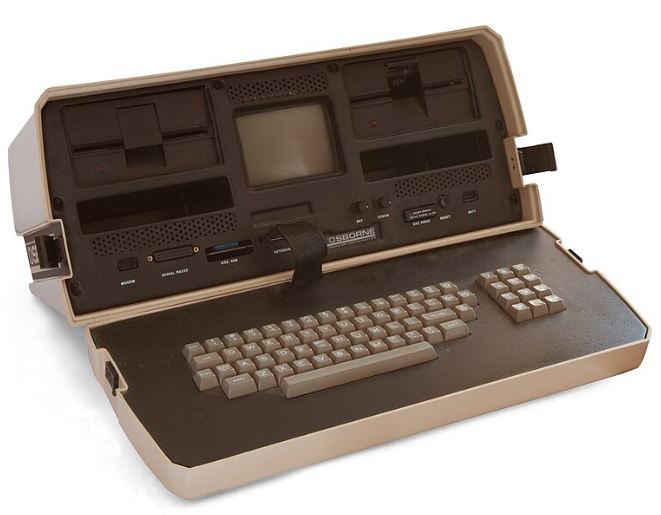Tutorials
Learn More
The first Laptop in the World
Have You Ever Imagined How the First Laptop Was Built? Which forces made Adam Osborne to build the World’s 1st Laptop?
The first laptop computer to be commercially available was the Osborne 1, which was released in April 1981. It was invented by Adam Osborne and was manufactured by Osborne Computer Corporation. The Osborne 1 had a 12.7-inch (32 cm) monochrome display, weighed 24.5 pounds (11.1 kg), and cost $1,795 (equivalent to $6,200 in 2022). It was also one of the first computers to use a microprocessor, the Intel 8088.

Source: Wikipedia
While the Osborne 1 was not the first portable computer, it was the first to be truly portable. It was small enough to be carried on a lap and did not require a separate power source, as it had a built-in battery. This made it possible for people to use computers outside of the office or home for the first time.
The Osborne 1 was a commercial success, but it was also a victim of its own success. The company had overestimated demand and had produced too many units. This led to financial problems and the company went bankrupt in 1983.
Despite its short lifespan, the Osborne 1 is considered to be a landmark in the history of computing. It paved the way for the development of more portable and affordable laptops, which have become essential tools for people all over the world.
Technology Used for First Laptop
The first laptop computer, the Osborne 1, was made using a variety of technologies that were available at the time.
CRT display: The Osborne 1 used a CRT display, which was a common technology for monitors at the time. CRT displays were bulky and heavy, but they were also relatively inexpensive and easy to produce.
Keyboard: The Osborne 1 had a built-in keyboard, which was also a common feature for portable computers at the time. Keyboards were necessary for users to interact with the computer.
Rechargeable battery: The Osborne 1 was powered by a rechargeable battery, which allowed users to use the computer without being tethered to an AC outlet. Rechargeable batteries were a relatively new technology at the time, but they were becoming increasingly popular for portable devices.
Microprocessor: The Osborne 1 was powered by a Z80A microprocessor, which was a popular microprocessor for microcomputers at the time. Z80A microprocessors were relatively inexpensive and easy to obtain.
Floppy disk drives: The Osborne 1 came with two 5.25-inch floppy disk drives, which were the standard storage medium for microcomputers at the time. Floppy disks were relatively inexpensive and easy to use.
Performance of Osborne
The performance of the Osborne 1 was considered to be “merely adequate” by its own creator, Adam Osborne. manufactured by Infocom. It was not the fastest microcomputer on the market, nor did it have a lot of disk storage space. It was also not very expandable.
However, the Osborne 1 was still a significant improvement over other portable computers of the time. It was much more powerful and versatile, and it was also more affordable.
The Osborne 1 was powered by a Z80A CPU that ran at 4MHz. It had 64K of RAM and 4K of ROM. It came with two 5.25-inch floppy disk drives that could store 90 KB of data per disk.
Here are some specific examples of the Osborne 1’s performance:
- It could start up in about 20 seconds.
- It could load a word processing program in about 10 seconds.
- It could type at a speed of about 10 characters per second.
- It could display a text file at a resolution of 640×240 pixels.
While these numbers may seem incomparable by today’s standards, they were impressive for a portable computer in 1981.
History shows that Osborne also made some poor business decisions that ultimately led to the demise of his company. For example, he announced the release of a new and more powerful laptop computer, the Osborne Executive, before the Osborne 1 had even been released. This announcement caused many customers to cancel their orders for the Osborne 1, which led to financial problems for Osborne Computer Corporation.
Conclusion
In All, The story of Osborne 1 is a cautionary tale about the importance of good business planning. However, it is also a story of innovation and perseverance. Osborne had a vision for a portable computer that would change the world, and he was able to bring that vision to life, even if it was only for a short time.
Semiconductor Industry